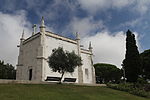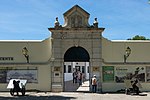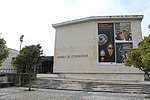Fort of Alto do Duque
Campo EntrincheiradoForts in Portugal
The Fort of Alto do Duque is located 75 meters above sea level at the southwestern tip of the Monsanto Forest Park, in the parish of Ajuda, in Portugal's capital of Lisbon. Built at the end of the 19th century as part of Lisbon's Campo Entrincheirado (Entrenched Field) defensive ring around the city, with the intention that it, together with the Fort of Bom Sucesso, would defend against attacks along the River Tagus, the fort is now headquarters of the criminal investigation division of the Polícia de Segurança Pública (PSP) in Lisbon.
Excerpt from the Wikipedia article Fort of Alto do Duque (License: CC BY-SA 3.0, Authors).Fort of Alto do Duque
Estrada do Forte do Alto do Duque, Lisbon São Francisco Xavier (Belém)
Geographical coordinates (GPS) Address External links Nearby Places Show on map
Geographical coordinates (GPS)
| Latitude | Longitude |
|---|---|
| N 38.703805 ° | E -9.222213 ° |
Address
Forte do Alto do Duque
Estrada do Forte do Alto do Duque
1449-005 Lisbon, São Francisco Xavier (Belém)
Portugal
Open on Google Maps







